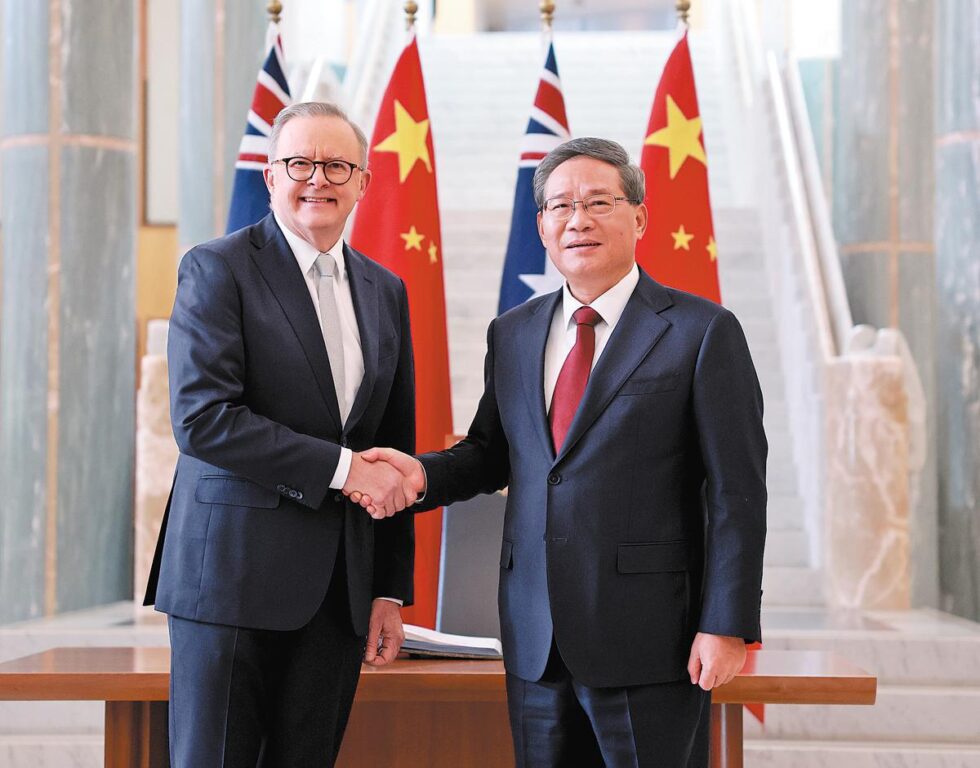
Australia’s superannuation system is robust.
It is well regulated and strong.
So, why then would both the International Monetary Fund (IMF) and the Reserve Bank of Australia (RBA) raise any financial stability concerns in connection with superannuation?
The answer is simple.
While it’s the biggest, it’s dominated by three huge funds, and those funds take risks to grow the investment returns for their members.
The IMF and RBA are worried those risks may end up denting millions of account balances.
Let’s dig deeper.
Australia’s massive superannuation system
Paul Keating designed Australia’s modern superannuation system to give workers access to the financial alchemy of “compounding”.
In 1986, the Australian government, joined with the Australian Council of Trade Unions (ACTU) to seek a universal 3 per cent superannuation contribution, by employers, to be paid into an industry fund, in lieu of pay increases.
Later in 1992, Keating enacted the Superannuation Guarantee.
It was game changing from an investment point of view because millions of workers were about to, by default, invest like professionals for retirement.
That is, fortnightly or monthly, payroll workers would send hard cash to their superannuation provider to be managed as it saw fit.
Superannuation used to be paid in cash. (ABC News: Jessica Hinchliffe)
Fast forward to 2024, and, according to the Association of Superannuation Funds of Australia (ASFA), that pool of money is now valued at $3.9 trillion.
The Reserve Bank sees that amount of money as something akin to a big stable rock of capital, supporting the economy.
There’s just one problem.
The inflows — workers’ collective pay — are mostly channelled into three main super funds: AustralianSuper, Commonwealth Super, and Australian Retirement Trust.
“The main concern of the Reserve Bank and the IMF have been related to that we have seen a concentration of superannuation funds in Australia — partly under pressure from regulators and authorities, and they’re worried that concentration could pose certain risks per chance there was a problem in one of the bigger superannuation funds,” AMP’s head of investment strategy Shane Oliver said.
Big investments fall hard
Surely though if these big funds are well managed, there’s no problem?
That’s true, to the extent that a managed fund isn’t subject to any shocks.
Britain dealt with such a shock in 2022 when, under then-prime minister Liz Truss, the bond market went into a tailspin following a budget speech.
The financial markets were unsure how she would fund her budget plans, leading to a bond sell-off.
Michele Bullock says super funds are reasonably stable. (AAP: Dan Himbrechts)
“There were problems in the bond markets,” RBA governor Michele Bullock told parliament.
“There were margin calls made on the pension funds because they had [bond] investments.
“They had to sell assets in order to meet those margin calls, and that was exacerbating the problems in the financial markets.
“The assets and the liabilities of the super funds in Australia are reasonably stable, they’re long-lived and they’re matched, [which] is actually positive for stability.
“It’s just that because it’s such a big part of the financial system now, it’s just worth watching.”
A plunging Australian dollar
So, the obvious question then is, what could threaten these major funds?
Well, they all invest a little over a third of their members’ funds offshore.
They do this to increase the return on their investments
The value of those investments changes with swings in the Australian dollar.
The Australian dollar’s performance can influence super. (ABC News: John Gunn)
A higher Australian dollar relative to the greenback lowers the investment value of US stocks, for example, and vice versa.
To smooth this out, the super funds hedge or protect this risk with financial products known as derivatives.
The risk with this hedging, according to the RBA, lies with a significantly lower Australian dollar.
“Funds might be developed in a range of financial instruments, including offshore, and they may take out hedges to protect their investors, but sometimes those investors require margins to be paid when there are large movements in markets,” RBA assistant governor Christopher Kent told Senate estimates.
“And so there’s a potential — just because they’re such big players — that those margin calls, for example, can cause some periods of instability, potentially.”
To be clear, hedging as an investment strategy, is designed to reduce investment risk.
The Reserve Bank, and IMF, are making the point that the currency hedging positions of Australia’s big three superannuation funds are investments in of themselves and are subject to risk.
And if a big super fund found its currency hedge deep in the red (which they say would come about with a collapse in the Australian dollar), it may be forced to stump up cash (known as a margin call).
This could, and I stress, could, lead to a large dumping of shares on the Australian share market, cutting into millions of superannuation balances.
The SMSF Association says the median investment by self-funded retirees in Australian listed shares is $300,000. (Unsplash: James Hose Jnr)
“They are such a big part of the financial markets, and hold so many assets, that the question just is: if there are, for example, ructions in financial markets, and we saw a little bit of this in the UK,” Ms Bullock told Senate estimates.
“If super funds have to, for example, sell some assets to meet margin requirements, then that can exacerbate the ructions in the market.
“So, that might be a financial stability risk,” she said
Trump brings elevated financial risks
The US election has already seen some big moves in financial markets.
Election day last Wednesday saw a large bond sale and a 1.6 per cent drop in the Australian dollar.
The following day saw one of the biggest percentage increases on Wall Street in years and the VIX (or fear index) drop by a near record 30 per cent.




